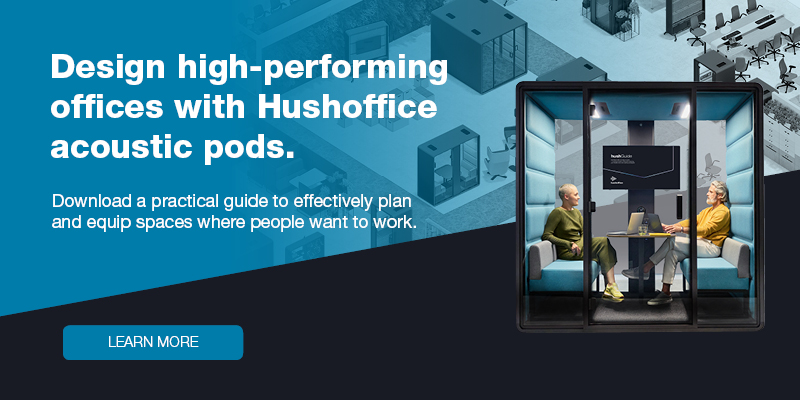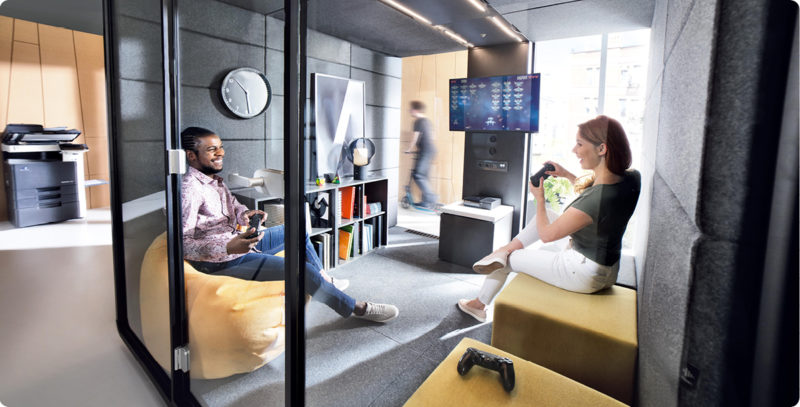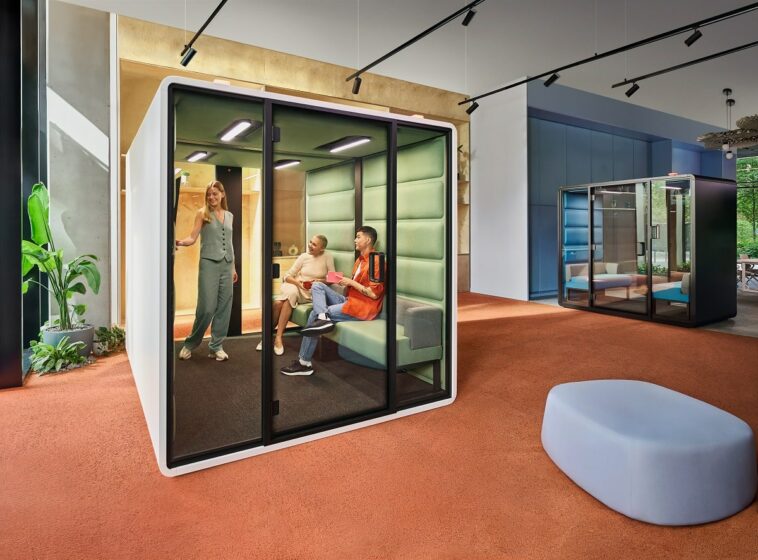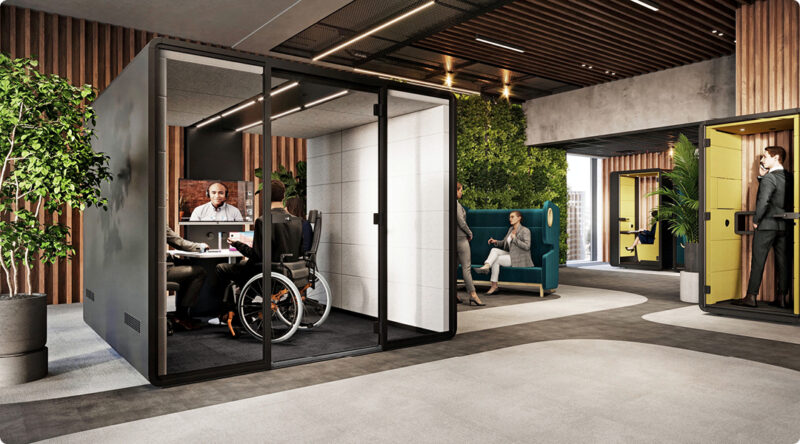Acoustic office booths can prevent headaches & ease back pain
- Posted on: 30 January 2024
- By: Hushoffice Team
Did you know headache disorders are more prevalent year by year? Similarly, low back pain is quickly becoming ubiquitous. Sharing a strong link to office noise, both are purely modern phenomena worth a close look. Incidentally, well-furnished, quiet office pods and booths can help.
Headaches and back pain occurring at office work – tl;dr
Headache disorders are some of the most pervasive and debilitating conditions globally. Occupational noise is a primary culprit, with individual sensitivity varying greatly per a wide range of factors. Migraines, specifically, greatly hurt work efficiency. Sufferers report being only 46% effective during an attack.
Periodic relief from office noise is necessary to quell headache tension. Silence also increases cell density in the prefrontal cortex while decreasing cell density in the amygdala, two beneficial effects for overall cognition and well-being. It also induces a positive stress response called eustress believed to trigger new brain cell growth. Moreover, taking breaks in environments of low sensory levels allows the brain to recover. For these reasons, Hushoffice pods are a smart solution for chronic workplace headaches and stress.
Low back pain is the single leading cause of disability worldwide. One of the best ways to relieve it is by staying active throughout the workday. This is because sedentary behavior invariably exacerbates aches and pains.
Office noise. The (not so) invisible enemy of employee health.
The World Health Organization has aptly recognized noise pollution as a modern plague. “There is overwhelming evidence that exposure to environmental noise has adverse effects on the health of the population,” clarifies their report on the matter. The effects are too many to keep up with.
Occupational exposure to noise is linked to a higher likelihood of chronic mental health issues such as anxiety, depression, and burnout.
Office noise significantly disrupts workaday office tasks like memory for prose and mental arithmetic.
Noise pollution disturbs sleep, interferes with complex task performance, causes annoyance, is associated with hypertension, and impairs reading comprehension.
Noise. Stress. A vicious cycle — a holding pattern of headaches (and more stress).
Excessive office noise directly causes headaches. Headaches hinder productivity, causing stress. Stress intensifies the headache which begets more stress. Or, perhaps, the cycle starts with stress. Tension-headaches in particular are as a matter of fact often stress-induced. But regardless of how the cycle starts, the result is the same. Eroded focus and crushed well-being. Nipping office noise in the bud — and addressing other stress factors — is the way forward. It is the helping hand employees need in order to get off the rollercoaster. Only in addressing root causes will a more healthful cycle be possible
– says Mateusz Barczyk, Senior Brand Manager, Hushoffice.
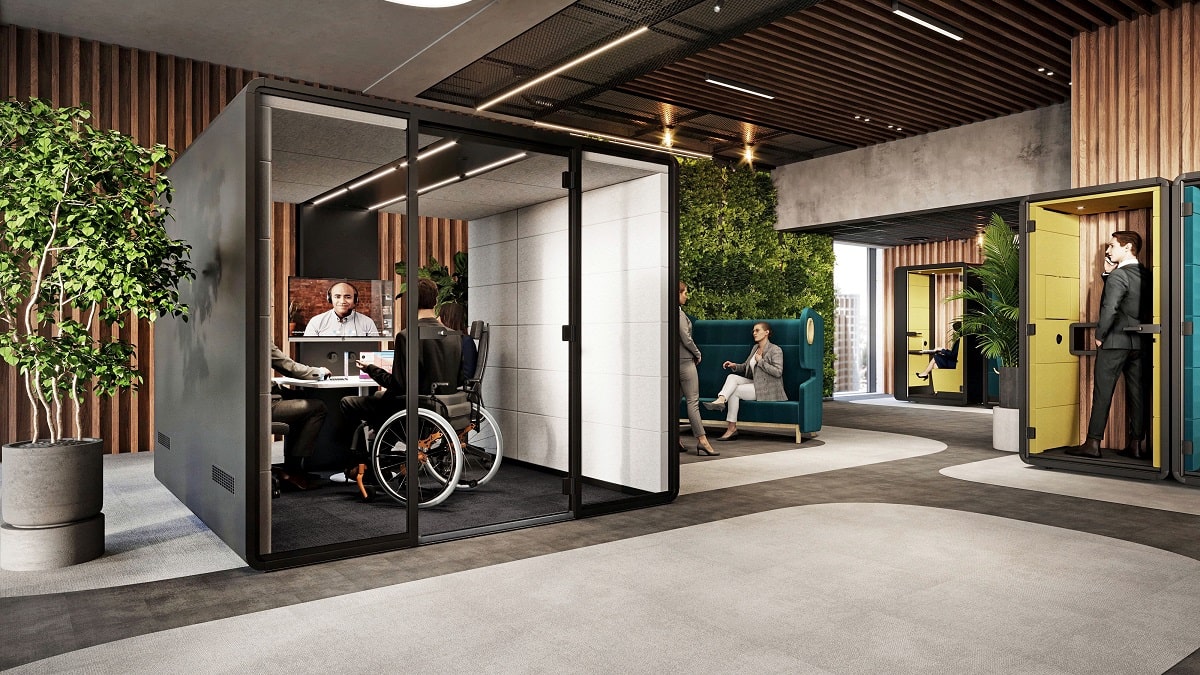
Headache disorders rank as some of the most prevalent and disabling conditions worldwide. And of course, occupational noise exposure is a primary culprit, with individual sensitivity varying greatly per every factor imaginable from genetics to hearing health to personality traits.
Migraines. The mother of all headaches. A productivity killer aggravated by office noise.
Migraines in particular significantly impede performance. In fact, sufferers report being only 46% effective during an attack. While pain is ranked as the worst symptom, it is followed immediately by difficulty thinking — cognitive impairments like attention, executive-function, and memory deficits.
Our brains love silence. The benefits of taking breaks in a noise-free space are many.
The gifts of silence are concrete and scientifically sound. A mind unoccupied by external stimuli can see its own inner workings after all. Creativity and empathy flow from the “pause.” It is true that profound ideas and emotions are often preceded and accompanied by moments of silence.

Silence is shown to result in increased cell density in the prefrontal cortex. This part of the brain handles working memory and attention control among many other functions. At the same time, silence also results in decreased cell density in the amygdala. As many know, the amygdala is associated primarily with “fight or flight” mode and stress responses. So it makes sense that, conversely, loud noises cause stress by activating this amygdala.
Research from Duke University found that listening to silence induces a positive stress response called eustress or “good stress.” It is believed this eustress catalyzes new brain cells to grow. Specifically, their team found that two hours of silence per day led to the development of new cells in the hippocampus. The hippocampus region of the brain is associated with memory, learning, and neurogenesis. And neurogenesis refers to the generation of new neurons, which is of known importance to cognitive function.
Attention Restoration Theory posits that retreating in environments with low levels of sensory input allows the brain to recover and replenish cognitive resources. This leads to improved attention and well-being. Calm, natural settings, for instance, promote tremendous mental renewal by reducing mental fatigue from directed attention. In the office, short virtual nature breaks in a seclusive pod like hushHybrid are highly recommended.
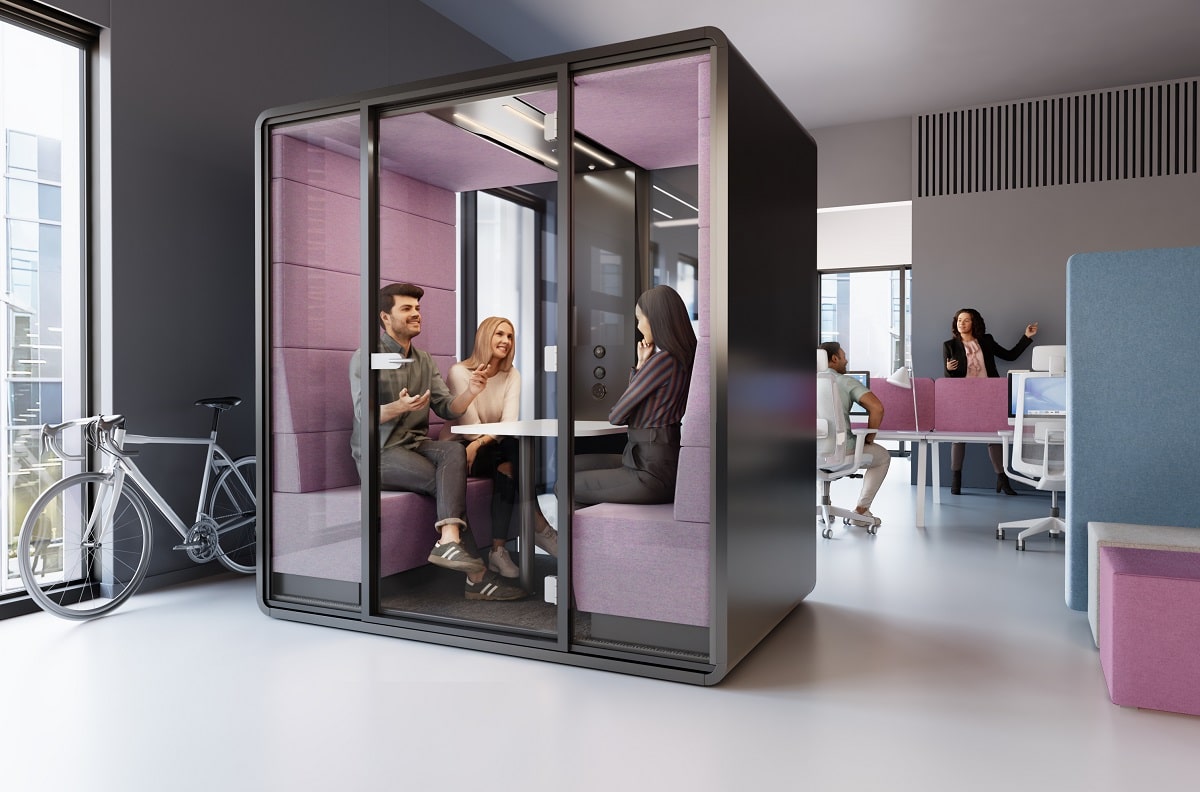
Silence dissolves stress. Calm and well-being are ultimately one.
Constant sensory input strains your attention centers. As continuous demand depletes resources, distraction and mental fatigue form. But the brain can replenish these cognitive reserves all by itself in spaces of limited activity and perfect quiet like hushMeet.
Acoustic office booths can be arranged (and rearranged) easily in the name of relaxation.
To settle into any space and de-stress, people need to feel sure there is no possibility of being intruded upon. Mobile spatial solutions such as pods give this guarantee confidently. They can be positioned in tucked-away areas of the office that see minimal foot traffic. Moreover, they can be oriented such that their glass panels face the direction offering a most desirable balance of visual connection and architectural separation. Naturally, because pods and booths are mobile, they can also be relocated as other parts of the office layout changes. No matter the adjustments, they can be quickly rolled or rotated to maintain an alignment and overall placement that offers the most total retreat
– says Mateusz Barczyk, Senior Brand Manager, Hushoffice.
Of course, some employees don’t need to unplug to reap the benefits of quietude. Many can simply retreat to a pod and proceed with the task at hand. They will tap into silence all the same, just by working within it.
Silence plus good ergonomics. Hushoffice acoustic booths better workplace well-being.
One of the most important things people with low back pain can do is to stay as physically active as possible. Sit-stand workstations are part of the equation because they bring movement to otherwise sedentary desk work. This matters considering we spend nearly 6 hours every workday at their desk.
User-adjustable, Hushoffice booth lighting and ventilation can be set for optimal comfort.
With the ability to fix ambient light levels, eye strain and the headaches caused by it are abated. And the ability to set one’s preferred ventilation levels in a Hushoffice booth enhances thermal comfort, a key aspect of ergonomics.

Activity-based working promotes movement. Movement is good ergonomics.
When the office is arranged by activities, employees intuitively move through it each day, satisfying each task respectively in the specific work environment best suitable for its nature. To deliver a virtual sales pitch, they go to hushHybrid in the far corner. To get together with teammates casually, they convene at the central workbench. To take a personal call, they head to the long corridor where three hushPhone booths sit by for convenient use. Every new task is a chance to get some steps in and switch gears, beginning again with fresh energy
– says Mateusz Barczyk, Senior Brand Manager, Hushoffice.
Instead of being seated at the desk all day, the employee has been in movement over the course of a typical day in an activity-based office. They have thus gotten a healthy amount of the Non-Exercise Activity experts deem equally if not more important to health than formal exercise.
So how do Hushoffice acoustic booths revolutionize workplace well-being?
Booths are a premium retreat from office bustle. They are comfortably quiet and architecturally private. Carefully arranged, they can boost movement throughout the floor. Adjustable lighting and ventilation make their cherry atop the luxury ergonomic ease they everyday deliver.
Explore the Hushoffice line of private pods and booths here.
Headaches and back pain occurring at office work – summary
Headache disorders are some of the most pervasive and debilitating conditions globally. Occupational noise is a primary culprit, with individual sensitivity varying greatly per a wide range of factors. Migraines, specifically, greatly hurt work efficiency. Sufferers report being only 46% effective during an attack.
Periodic relief from office noise is necessary to quell headache tension. Silence also increases cell density in the prefrontal cortex while decreasing cell density in the amygdala, two beneficial effects for overall cognition and well-being. It also induces a positive stress response called eustress believed to trigger new brain cell growth. Moreover, taking breaks in environments of low sensory levels allows the brain to recover. For these reasons, Hushoffice pods are a smart solution for chronic workplace headaches and stress.
Low back pain is the single leading cause of disability worldwide. One of the best ways to relieve it is by staying active throughout the workday. This is because sedentary behavior invariably exacerbates aches and pains.
Office work-related disorders – frequently asked questions
Why is movement at the desk important?
Static loading refers to holding one position for a long period of time. It creates discomfort and a medley of health troubles. At the workstation, adjustable stools, desks, and footrests are necessary to enable subtle, periodic tweaks in work posture.
How do I make my office more migraine-friendly?
People prone to migraines are commonly extra sensitive to environmental stimuli. To make your workplace more accommodative, look at sights, sounds, and smells. Implement freestanding space dividers and desktop privacy screens to offer adequate shielding from visual activity. Provide noise-insulated spaces like pods where employees can seek refuge to relieve headache-causing tension. And refrain from using artificial scents in the office.
How can office booths help relieve stress?
Office booths offer a quick vacation from the open floor’s commotion. They are comfortably furnished and upholstered with cozy fabric panels. Their adjustable lighting and ventilation offers enhanced ergonomics. And they are pleasantly quiet. Check out the Hushoffice collection of pods here.

